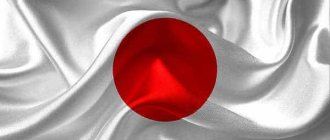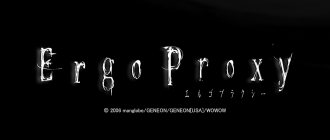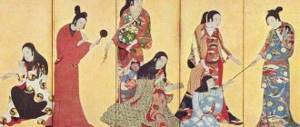The main events take place the day before Christmas, that is, December 24th. On this day, you can see special Christmas episodes of your favorite programs on almost all television channels. They also show numerous films and cartoons dedicated to Christmas.
Local residents also associate the eve of the holiday with parades, parties, and bright fireworks. We can say that for a short period of time, all of Japan turns into one big carnival with a Christmas flavor.
Winter illuminations
Christmas lights in Japan are very beautiful. From November to February, most major cities in Japan light up with eye-catching colorful lights. Some illuminations are entire compositions that tell stories and take the audience on a wonderful journey. It's hard to imagine Christmas and winter in Japan without magical illuminations.
We've put together our list of the best Christmas lights in Tokyo.
Shiodome
Another stunning sight can be seen near the Caretta (Shiodome) high-rise building near Shimbashi Station (JR). A small plot of land in front of the skyscraper is decorated with a carpet of mysterious blue lights. Recently, this place has been gaining popularity thanks to projections on the walls of the building. The theme of the visual presentation changes every year and often includes interactive interaction with visitors. Other interesting places are located near the neighboring high-rise called Shiodome City Center, including an amazing tunnel covered with garlands of countless bulbs and lights. Couples can turn to the bell that predicts the future!
Holiday at Disneyland
Tokyo Disneyland and DisneySea are known for their atmosphere, which is even more special during the holidays. Get into the Christmas spirit with lush seasonal decorations, colorful holiday parades and music. The parks usually have special Christmas events and sell special holiday items and snacks.
Christmas at Disneyland and DisneySea begins in November. So if you want to celebrate early to avoid the crowds, you have the option to do so. Although we would recommend avoiding visiting the parks on the public holidays of November 3rd (Culture Day) and November 23rd (Labor Thanksgiving Day)!
Roppongi
This list opens with Tokyo Midtown, a shopping complex with a huge park area adjacent to it. The spacious lawn located directly behind the building makes an excellent venue for the Starlight Garden festival. The light show, which lasts 5-10 minutes and is accompanied by delightful music, features hundreds of LED lights and even some moving objects. The theme of the show changes from year to year, so you are guaranteed to see a unique spectacle, even if this is not your first time in Tokyo. Although Midtown Park is quite crowded (especially during the holiday season), lucky guests will be lucky enough to take magical photos of the park lights with the Tokyo Tower glowing in the distance. Thanks to the winter illumination, it looks exactly like a giant Christmas tree!
Tokyo Midtown is also the perfect place to buy Christmas gifts and enjoy the festive themed decorations. Don't forget to also check out Roppongi Hills Shopping Complex, which hosts a variety of celebrations in the run-up to Christmas.
Romantic date
For many Western countries, Christmas is an opportunity to spend quality time with family and friends. However, in Japan this holiday has a more romantic image. Couples celebrate December 25th with dinner at a restaurant and exchange of gifts.
Therefore, it is not so easy to book restaurant tables for Christmas. Don't forget to plan everything in advance!
History of Christmas in Japan
It all started not so long ago - in December 1904. It was then that a decorated Christmas tree was first installed at the entrance to one of the department stores in Tokyo. It is believed that it was she who started the tradition of celebrating Christmas.
However, back in the middle of the last century, December 24 and 25 were the most common days for most Japanese. But the constant rapprochement with the West and the globalization of the world have made Christmas truly popular here too.
Now local children also run to the Christmas tree in the morning to unpack gifts, and adults buy postcards and take family portraits in beautiful sweaters to then send pictures to their closest relatives.
Skiing
Visiting ski resorts is another extremely popular activity in Japan during this time. Keep this in mind, if you really want to ski or snowboard over Christmas, you'll need to book in advance. The longer you wait, the more difficult it will be to find accommodation, and the cost of the flight will be much higher than usual.
But if you're willing to put up with a lot of people and have some time to spare, then skiing at Christmas can be a fun and wonderful way to celebrate.
Find out more about the best places to go skiing and snowboarding in Japan.
And what else?
Of course, crispy chicken is not the only Japanese Christmas dish. The second most popular, but no less important component of the holiday table can rightfully be considered Christmas cake with strawberries (苺のクリスマスケーキ ichigo-no kurisumasu ke:ki). You've probably seen him more than once in Japanese TV series (dramas) and anime. This delicacy looks very beautiful, which makes it immediately seem that it will take a lot of time to prepare, but this is not entirely true: in Japanese supermarkets you can easily find ready-made cake layers, whipped cream, berries and chocolate for decoration - and preparation will not take more than 30 minutes! However, most Japanese people buy takeaway food from 24-hour konbini (コンビニ konbini) shops. Christmas is an unofficial holiday, so Japanese workers do not have a free day to prepare a festive dinner; they usually buy it on the way from work.
Fried chicken
Almost everyone knows about this Christmas tradition in Japan! A marketing campaign in the 70s led much of Japan to believe that fried chicken, particularly KFC , was what Westerners served for Christmas dinner.
The Japanese love this tradition, so you might want to consider pre-booking a seat or delivery at your local KFC. If you don't like standing in line, FamilyMart and other convenience stores offer their own fried chicken options that can be ordered in advance.
After Christmas
As soon as Christmas ends, active preparations for the New Year begin. Shimekazari (national amulets) are replacing Christmas trees, the design of store windows is changing, and new advertising is appearing. Despite the growing popularity of Christmas, New Year in Japan is still loved more and celebrated with great fanfare.
Note: don't know what to give your girlfriend? If she is interested in sports, she will appreciate sneakers, which you can choose and purchase at https://creamstore.com.ua/krossovki. Most importantly, find out her foot size and favorite color in advance.
<Everything you wanted to know about New Year celebrations in Japan
New Year in Japan: celebration traditions>
Treat yourself to strawberry cake
Christmas strawberry cake is the best treat in Japan this season. Incredibly light and airy sponge cake, covered with whipped cream and fresh strawberries, will not leave anyone indifferent.
The great news is that they're not just sold during the Christmas season, so you can treat your sweet tooth any time of year.
Christmas in Japan may not be what you are used to in your home country. But it is this unique Japanese style that makes this holiday so special here. So why not go on a date to KFC and try strawberry cake while admiring the beautiful winter lights?
To learn more about Japanese culture, follow our blog.
A little history
Today, Christmas (クリスマス, kurisumasu) can be called one of the most popular and beloved holidays by the Japanese, although it is not officially a public holiday. It is believed that the prototype of Japanese Christmas was Catholic Christmas, but it is impossible not to notice that both celebrations are very different: for example, in the West it is customary to celebrate the holiday with family, bake a turkey, prepare gifts for all loved ones in advance, while for the Japanese it is important to spend the eve Christmas with your loved ones, eat sweets and definitely crispy chicken!
In fact, the connection between Japanese Christmas and Catholicism is extremely indirect. Although Christianity penetrated into Japan back in the 16th century. Thanks to the Spanish missionary Francis Xavier, the religion itself and its followers faced an unenviable fate. Having initially found patrons among such powerful daimyo as Oda Nobunaga and Toyotomi Hideyoshi, Christianity quickly lost confidence due to the fault of the newly converted Japanese themselves - they rushed to destroy and desecrate Buddhist sanctuaries and temples that were displeasing to the Creator, as a result of which Christians were persecuted in the next century, and books and all kinds of “barbaric” (i.e. Western) religious teachings were strictly prohibited.
Currently, according to the Japanese Cultural Affairs Agency for 2021, the number of Japanese professing Christians barely exceeds 1 million, corresponding to 0.83% of the country's total population.
The real tradition of celebrating Christmas is, surprisingly, the result of the direct influence of American culture, which began to take root in Japan after the Meiji Restoration (1868) and the official end of the country's isolation. It gained even greater popularity after the Second World War, namely in the 1950s and 60s.
Odaiba
Here you will find Tokyo's largest Christmas tree, which is located in front of the themed Rainbow Bridge. Various festive events are held in the Venus Fort and Diver City shopping arcades, with Christmas lights installed everywhere. Couples also flock to Odaiba. Venus Fort is especially suitable for a romantic walk, its interior is decorated in the style of medieval Italy. But the most popular on Christmas Eve is the Ferris wheel (Palette Town). The line of young people wanting to ride the gondolas with their significant other will be the longest you've ever seen!
Marunouchi
The closest light show to the city center is held on the Marunouchi shopping street, which is known for its Western style. Local Christmas celebrations each year are distinguished by an enviable variety: from a wall projection that is broadcast onto an ancient century-old building to an open exhibition of unique moving figures. Marunouchi Street is a great place to buy luxurious gifts or drink a cup of hot coffee in one of the best cafes in the capital. And at the nearby Tokyo International Forum, you can catch a themed three-hour show with lasers, dancing and projection. It's okay if you don't make it in time for its opening: it will run for another ten days until the end of December!
Tokyo Disneyland and other theme parks
Many people come to Tokyo just for the Christmas festivals at Disneyland and DisneySea. The Christmas Fantasy (at Disneyland) and Christmas Wishes (at DisneySea) themed events are truly memorable with magical lights and spectacular fireworks displays. Here you will be transported into a shining world of imagination, dreams and beauty. This is an ideal Christmas destination for families with children.
Other popular theme parks that are especially popular in December are Seibuen, Toshimaen and Tokyo Dome City. The first two host illuminations and Christmas lights festivals until the end of March!
Shopping extravaganza: Shinjuku, Harajuku, Shibuya
How would Christmas be complete without the bright and crowded shopping malls where Japanese people scour for sales and discounts on gifts? Some of Tokyo's famous stores, such as Lumine (Shinjuku), Omotesando Hills (Harajuku) and Parco (Shibuya), offer dozens of exciting experiences for shoppers. Here you can buy unique souvenirs, enjoy Christmas dinner, listen to a live choir, or simply stroll through the lavishly decorated “cities within cities”! Children will be very happy to hug Santa Claus himself and receive a small gift from him. And outside these malls you'll see even more holiday lights - like on South Terrace; in the garland tunnel that leads to the western exit of Shinjuku Station; all along Omotesando Street, as well as literally on every corner in Shibuya.
CHRISTMAS IN JAPAN
The Japanese way of celebrating Christian Christmas struck me to the core. I have heard before that the Japanese are mostly atheists, and they adopted many celebrations that are filled with deep meaning for Europeans and Americans only as a formal ritual. However, in the case of Christmas, the Japanese tendency to borrow and rework aspects of foreign culture in their own way has gone surprisingly far.
Christmas in Japan is celebrated from December 24 to 25, according to Catholic tradition. However, these days are not days off. A European or American who comes to Japan for the first time at Christmas and is not entirely familiar with local customs may be surprised that as the end of December approaches, there is more and more talk about love dates and it becomes increasingly difficult to book a table in a restaurant or book a hotel room. The streets are decorated with many Christmas trees, garlands and bells, just as they do in Russia on New Year's Eve. Christmas trees are used exclusively artificial ones for certain reasons related to respect for the forest in Japan, although the variety of their sizes and colors is amazing. However, along with these decorations that are familiar to a foreigner, all kinds of hearts and figurines of angels or cupids also catch your eye.
The fact is that Christmas in Japan is nothing more than a holiday for all lovers! The Japanese call it kurisumasu,
from the English “Christmas”, which, as you know, means “Christmas”.
This name stuck here by 1912. Previously, Christmas in Japan was called seitansai
- “holy Christmas holiday”.
Reading seitansai
was gradually replaced by imitation of English -
kurisumasu.
Now the word
kurisumasu
is written in the Japanese alphabet katakana.
However, it is interesting that most Japanese do not at all focus on the fact that the Christmas celebration is associated with the birth of Jesus Christ, and some do not even know the biblical story of the miraculous birth. There are also those who are not even aware of the connection between the holiday and Christianity, and yet the word “Christmas” itself translated from Greek means “feast of Christ.” There are also those among the Japanese who consider Christmas to be the birthday of Santa Claus. The Japanese explain their tradition of celebrating Catholic Christmas by saying that it simply gives them pleasure, because on Kurisumasu
it is customary to decorate streets and houses, throw parties, cook Christmas cake, meet loved ones, and have fun with friends or family. Even foreigners living in Japan are influenced by the atmosphere of Japanese Christmas around them and make dates with their lovers on the evening of December 24 or 25.
Japanese children also rejoice at this holiday, who, like children in many other countries of the world, believe in Santa Claus (in Japan he is Santa Kuroha)
and expect gifts from him. Many people dressed as Santa Claus walk around the floors of department stores or on the streets as part of a promotion. Usually, foreigners of European or American origin who want to earn extra money are selected for their role, because Santa Claus with an Asian face would look strange.
However, Japan also has its own real Japanese Santa Claus, who officially represents the Japanese side at regular gatherings of Santa Clauses around the world, accepts letters of wishes from Japanese children and gives them Christmas gifts.
How did it happen that Christmas in Japan became associated mainly with the holiday of lovers? Perhaps the explanation for this can be found in the same way as for Valentine's Day, which is discussed in a separate chapter. Both holidays are the result of well-thought-out propaganda on the part of various companies that cleverly organize the sale of their products or services. If on Valentine's Day manufacturers of chocolate and all kinds of sweets make unprecedented profits at the expense of female customers, then at Christmas profitable sales are made by a wider range of Japanese companies. In the pre-Christmas days, the Japanese rush around the shops in search of gifts and Christmas cakes, make reservations in restaurants and book hotel rooms, eagerly falling for the bait of special Christmas promotions and discounts offered by enterprising companies. On TV screens, from radio speakers and on banners of Japanese Internet sites, calls like: “Please your loved ones for Christmas!” Such advertisements are broadcast both in department stores and in 24-hour stores. Flowers, chocolate, scarves, rings and other jewelry are recommended as gifts.
The average unmarried Japanese typically spends the evening of December 24th as follows. They go on a date to a restaurant, where they have dinner together with their loved one in a romantic setting. Often a special holiday menu is prepared for Christmas. Dinner at a luxurious restaurant overlooking the city at night can cost 10,000 yen per person. After this, the couple moves to the hotera slave,
that is, a special hotel for lovers. A room for two in such a hotel on ordinary days costs on average 6,000-8,000 yen, but around Christmas, prices in both restaurants and hotels rise noticeably, so many Japanese prefer to have a festive candlelit dinner at home, for example, while watching romantic film. It is at Christmas in Japan that most declarations of love and marriage proposals are made. The celebration can continue the next day.
Some people spend Christmas with friends or relatives. It is customary for the head of the family to buy a Christmas cake on his way home from work. In Japan, at Christmas they eat a sponge cake with cream, festively decorated, and not a pie or cupcake, traditional for Europe and America. Confectionery factories these days increase their productivity several times, and stores offer a wide selection of special holiday cakes. They strive to sell them before December 26, because otherwise they will have to make a large markdown. In this regard, a custom arose in Japan to call marriageable girls “Christmas cake.” It is believed that 25 years is the most suitable age for marriage, but once a girl reaches 26, it becomes more difficult for her to arrange her personal life. However, comparing twenty-six-year-old girls to stale Christmas cakes is just a harmless prejudice, as more and more Japanese people prefer to get married at a later age.
Young people who have not yet found their love dream of meeting it just before Christmas, since meeting on this day is considered a good sign. Of course, there are those who do not celebrate kurisumasu
or spend it alone.
In ancient times, even in Japan, it was customary to go to church on Christmas, and then have a celebration in a close family circle. But gradually the custom transformed.
The first pages of the history of Christmas in Japan are associated with the spread of Christianity. In the mid-16th century, Christian missionaries, Franciscans and Jesuits flocked to Japan. Their propaganda of a new belief for the Japanese brought quite tangible results, and by the end of the 16th century there were approximately three hundred thousand Christians among the Japanese. In 1552, the first Christmas service was held in Japan. However, disagreements between the missionaries themselves, as well as the intrigues of Spanish and Portuguese diplomats, led to the fact that the position of Christianity in Japan was shaken, and it lost the support of the authorities. On February 5, 1597, six Franciscan friars were crucified in Nagasaki. Persecution of Christians began, and in 1612 Christianity was finally banned. By 1630, Japanese Christians had gone completely underground. Japan entered an era of isolation from foreign influences. Most of the Christians were hiding in the Urakami area in northern Nagasaki. They continued to celebrate Christmas there in secret. It was also celebrated on the island of Dejima, where the Dutch settlements were located. Christmas on Dejima Island was called "Dutch New Year".
A new stage in the history of Japanese Christmas is associated with the opening of the country in 1854. Christianity began to gradually revive. By 1907, the number of Japanese Christians reached one hundred and seventy thousand people, most of whom were Protestants. In 1860, a Christmas party took place at the residence of the Prussian envoy. In 1873, Christianity was officially allowed. If earlier the celebration of Christmas was considered an exclusively family matter and was often carried out in secret, then already in 1875 it was celebrated for the first time in the Protestant women's educational institution Harajogakko:. At that time, the Maruzen department store began to introduce the tradition of Christmas sales of all kinds of decorations and gifts. At first, such sales were aimed at foreigners, but gradually gained popularity among the Japanese themselves. The production of artificial trees and Christmas cakes has improved. Imported Christmas goods were replaced by Japanese ones, and now their exports began to make a profit. In the early 1920s, Christmas parties began to be held for large numbers of guests, for example in Tokyo parks and at the Teikoku Hotel.
But in the 30s of the 20th century, anti-Western tendencies intensified in Japan. In 1933, the already traditional masquerade at the Teikoku Hotel was banned. In 1934, men in national costumes walked along Ginza Street in Tokyo. It was an anti-Christmas demonstration. The following year, the Japanese were already threatened with prison for celebrating Christmas. In addition, in 1937, all kinds of gatherings and gatherings were generally prohibited.
In the post-war 50s of the 20th century, Christmas again became fashionable in Japan. In 1951, the Association of Japanese Christmas and Easter Products Manufacturers was founded. By the 70s, Japanese Christmas had finally taken shape as a commercial, but beloved holiday. In modern Japan, more and more films, TV series and books on a Christmas theme are being created - for example, the work of Murakami Haruki, famous in Russia, “The Christmas of the Sheep Man”.
It should be mentioned that among the Japanese there are real Christians who celebrate Christmas, putting into it the same meaning as Europeans or Americans. However, their style of celebration is still different from the European one. During Christmas, Japanese Christians try to do as many good deeds as possible - help the homeless and disadvantaged, make donations, visit hospitals. There are 1.4 million Christians in Japan, and they are predominantly Catholic. The worldview and philosophical sides of Christianity are alien to most Japanese, and they perceive only its ritual aspects, and do not think about compatibility with other religions.
E.K.
Table of contents









